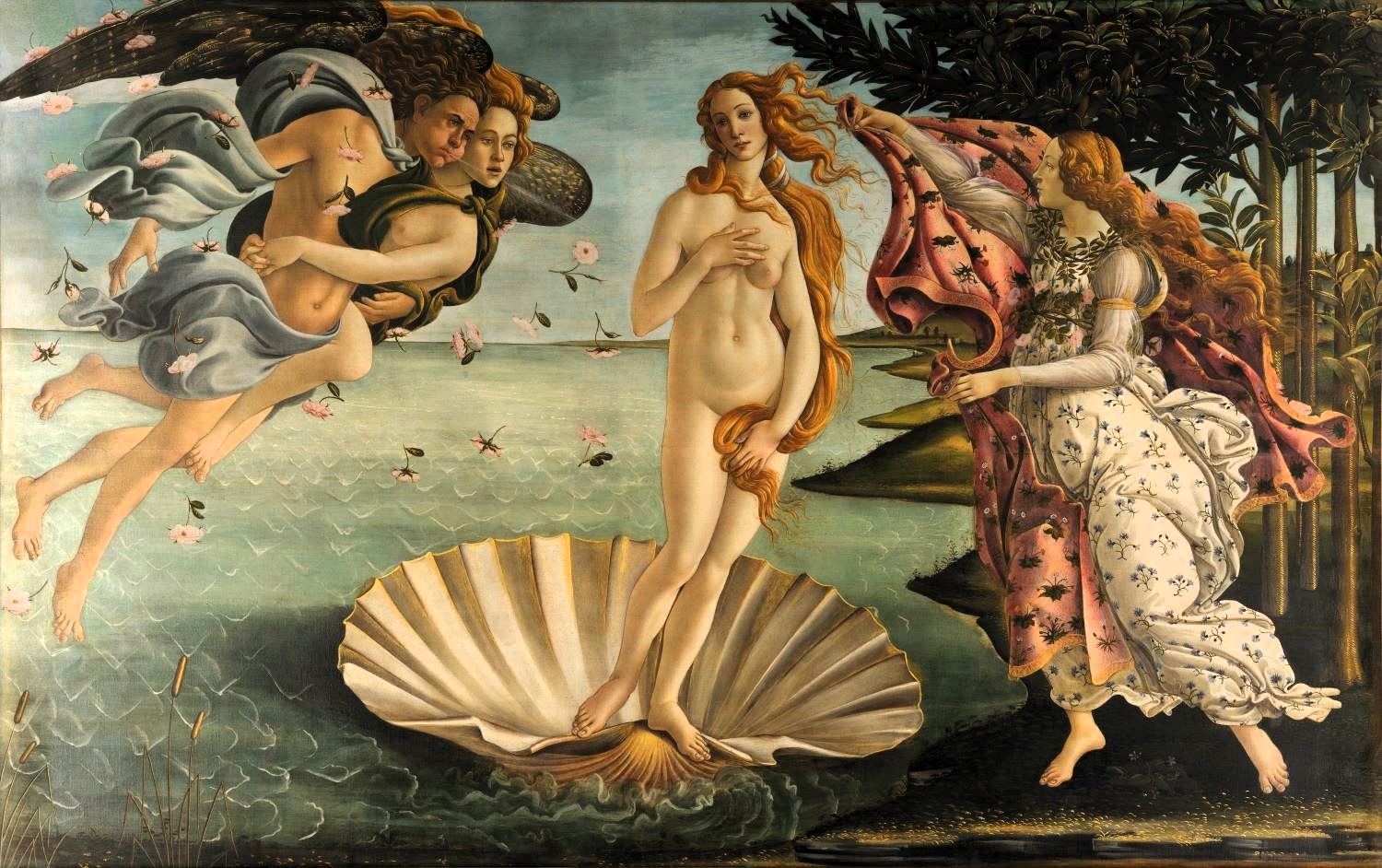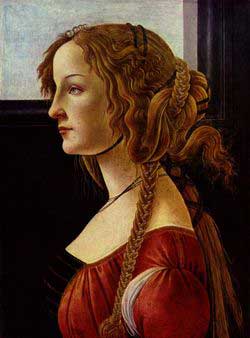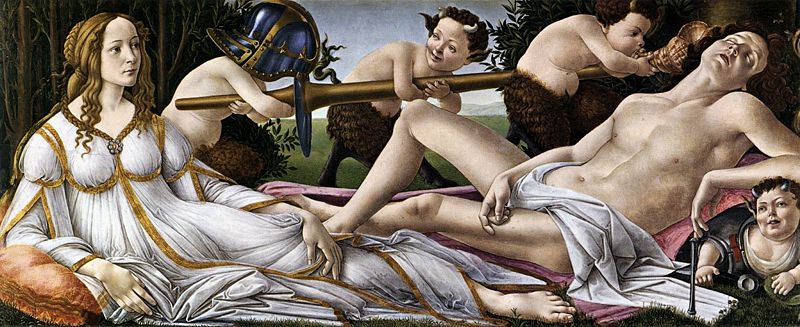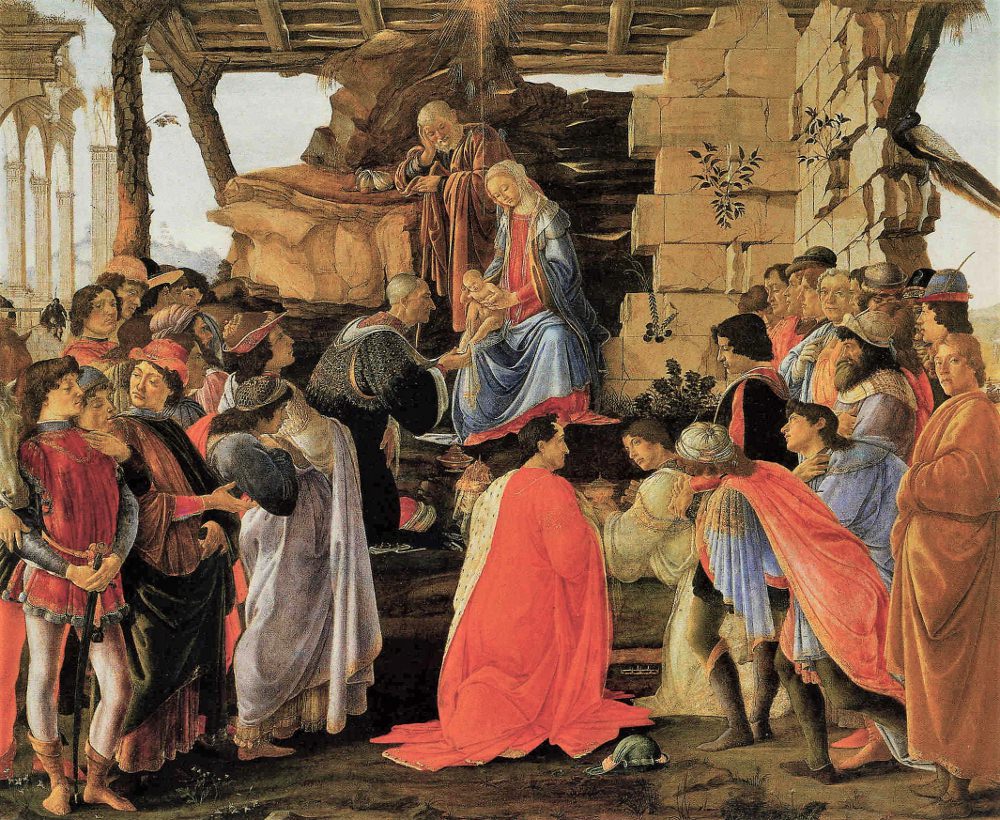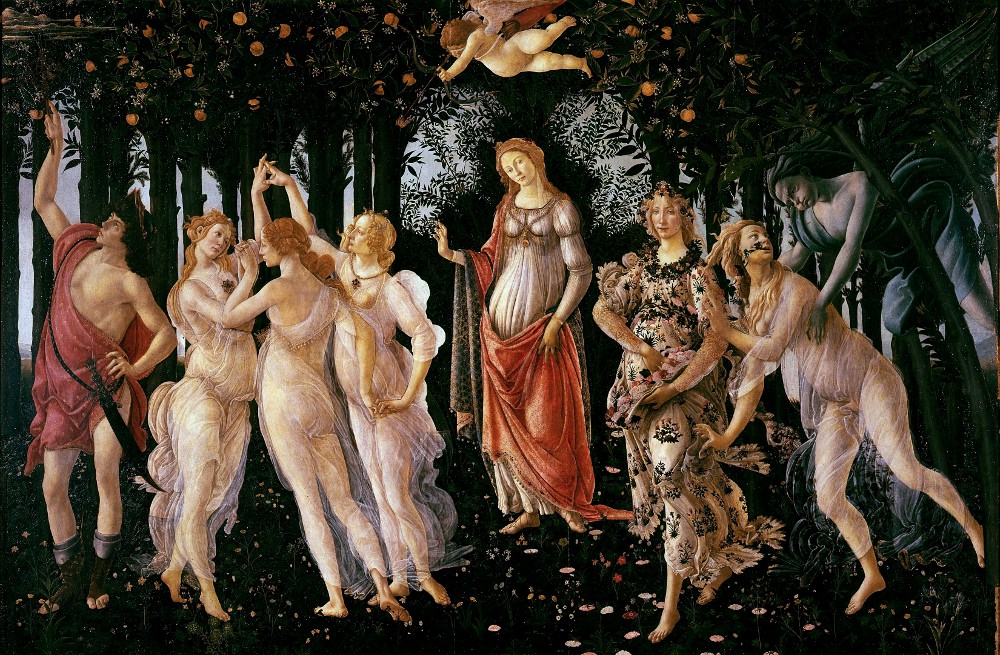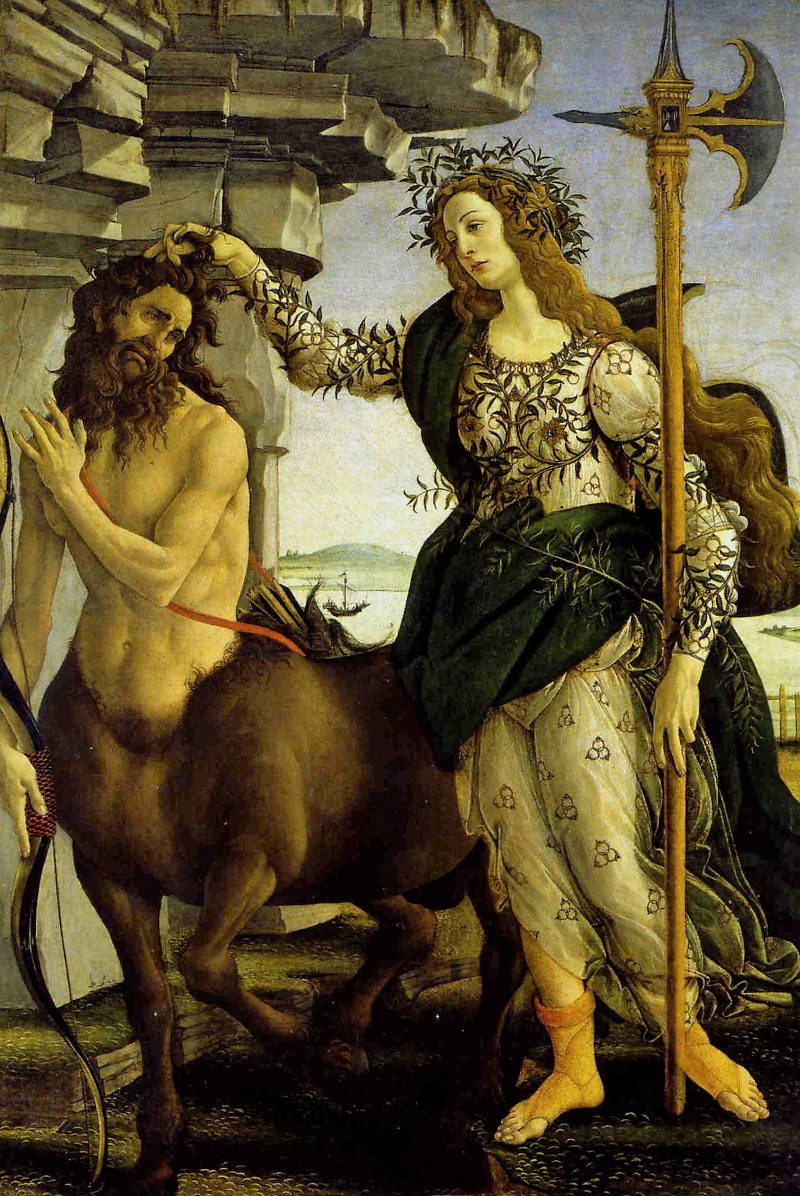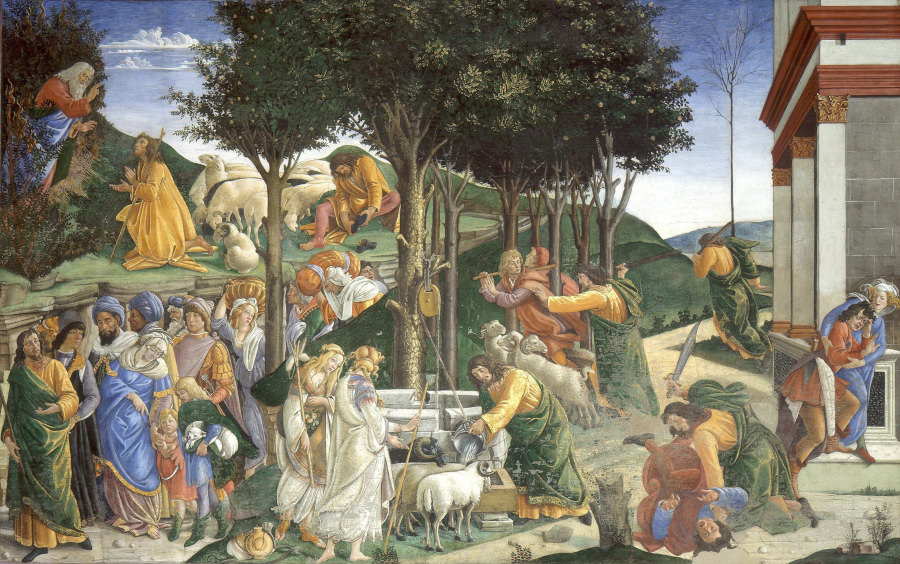The Birth of Venus. Sandro Botticelli's Goddess of Love.
The Birth of Venus was painted by the prominent Florentine artist Sandro Botticelli in the mid-1480s, it is a masterpiece of Italian Renaissance art. Botticelli's beautifully symbolic painting is world famous, its influence on art history is extensive.
The picture is painted on canvas a less expensive alternative to the wooden supports commonly used at the time. This would suggest that the Venus was intended for a less formal setting than a Palace. It hung at Castello in the country villa of the powerful Medici family along with another of the artist's mythological offerings the "Primavera".
It is believed that The Birth of Venus was commissioned by, Lorenzo di Pier Francesco de' Medici, for the Villa d Castello. The painting is executed on canvas using tempera, a medium common in Italy before the widespread adoption of oil painting. Tempera involved mixing pigments with a water-soluble binder, usually egg yolk.
The Birth of Venus and Mythology.
The title of the painting is misleading, according to mythology Venus was born from the genitals of Uranus, God of the sky. His son, the Titan Cronus - in revenge for his father’s cruelty - had cut them off and thrown them into the sea where the waters formed a froth around them giving life to the fully formed Goddess.
Venus is depicted standing upright in an oversized clamshell, her posture is unstable and off balance, her hands attempt to modestly cover her statuesque beauty as her long golden hair billows in the breeze. Roses float from the sky in a reference to their origin which coincided with the birth of the Goddess. She rises from the sea looking like a classical statue and floating on a seashell in what is surely one of the most recognisable images in the history of art.
On Venus' right is Zephyrus, God of Winds, he carries with him the gentle breeze Aura and together they blow the Goddess of Love ashore. She is guided to the island of Kythera in Greece or Paphos in Cyprus where The Horae, Goddesses of the Seasons, waits to receive her and spreads out a flower covered robe in readiness for the Love Goddess' arrival. The orange grove in the background romantically suggests love, marriage and the coming of spring. Botticelli has emphasised the central figure by going over the outline with a black line.
Simonetta Vespucci Botticelli's Venus.
The figure of Venus is believed to be modelled after Simonetta Vespucci, a renowned beauty of the time and a favourite model of Botticelli.
Simonetta was also extremely popular within the Medici court with who Botticelli had close ties. Her idealized features and graceful pose embody the Renaissance ideals of beauty and harmony.
Botticelli also used Simonetta as the model for several other women in his paintings supporting the view that he was in love with her.
In fact, Simonetta died at the early age of twenty-two and Botticelli expressed a wish to be buried at her feet.
The idea for the Birth of Venus was provided by the Medici court poet Angelo Poliziano, Botticelli has also taken some inspiration from a hymn by the classical poet Homer. However, it is an unusual subject for the time, as most Renaissance artists used themes from the teachings of the Catholic church for their paintings. Despite its subject matter, the Catholic Church accepted the painting as a celebration of beauty and divine love virtues which aligned with its Christian values. The mythological works by Botticelli, The Venus, "Primavera", and "Pallas and the Centaur", typify his pagan phase.
Venus and Zephyrus, details.
 Venus, Goddess of Love. (detail) (s)
Venus, Goddess of Love. (detail) (s)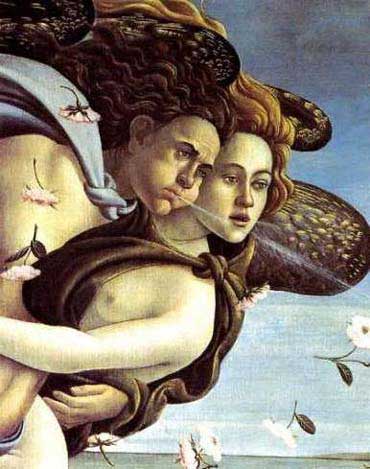 Zephyrus, God of Winds, and the gentle breeze Aura. (detail) (s)
Zephyrus, God of Winds, and the gentle breeze Aura. (detail) (s)Personal Opinion: -
What a fantastic image by Botticelli, you must admire his simple, but highly effective line drawing. This will always be... Venus.
Again, a beautifully executed double image of the gods.
Is "Aura" yet another portrait of Simonetta Vespucci, the second within the same painting?
It probably is, in any case, this detail is filled with a harmonious tenderness and highlights the depth of feeling that Botticelli had for Simonetta.
Does he imagine himself as the God of Winds, embracing the love of his life in his arms?
What a romantic notion!
Botticelli’s The Birth of Venus has inspired countless reproductions, its impact on the generations of artists that followed is immense. Its mythological subject matter and masterful linier execution has secured Sandro Botticelli’s masterpiece as one of the most recognisable and beloved images in art history.
- Home
- Sandro Botticelli
- Birth of Venus
